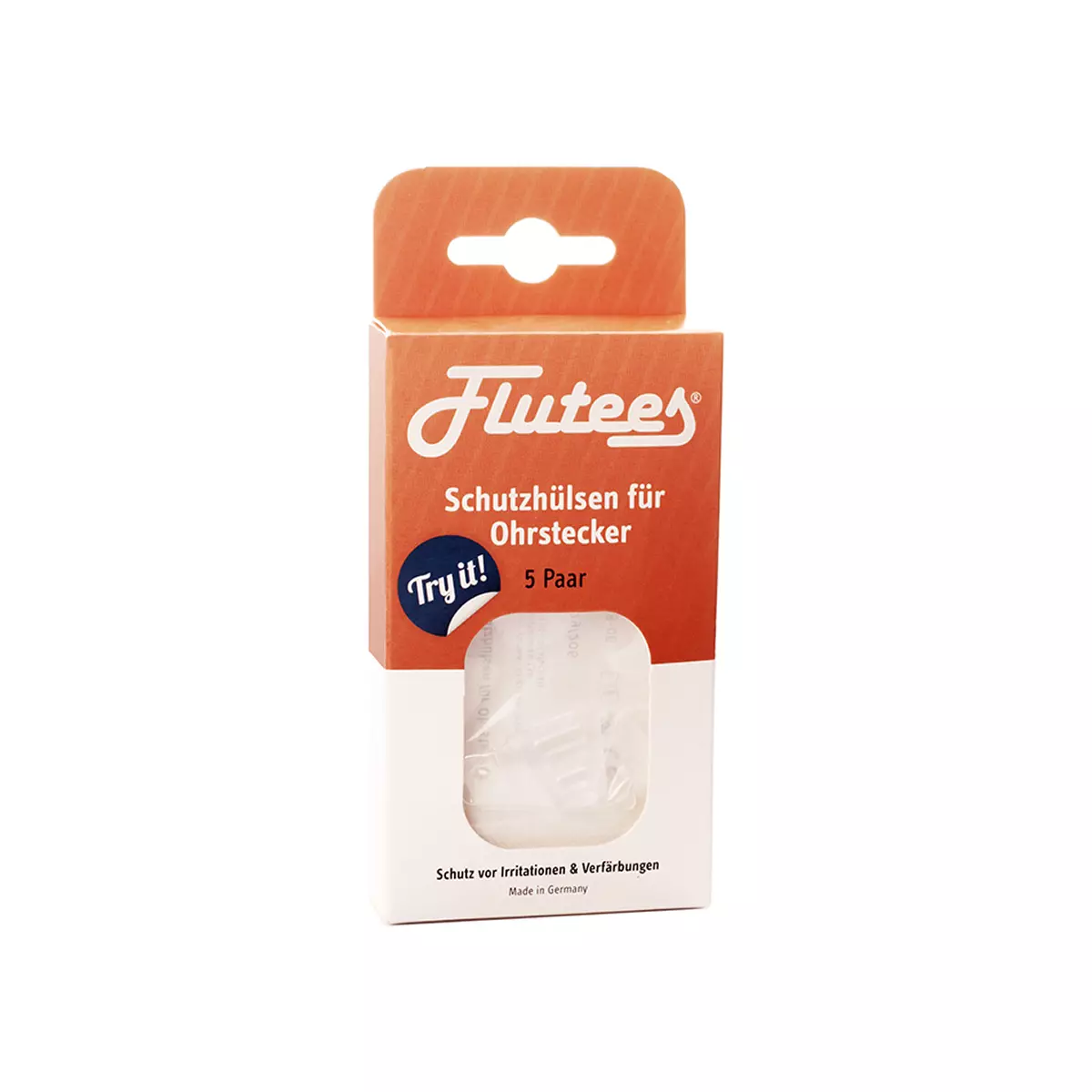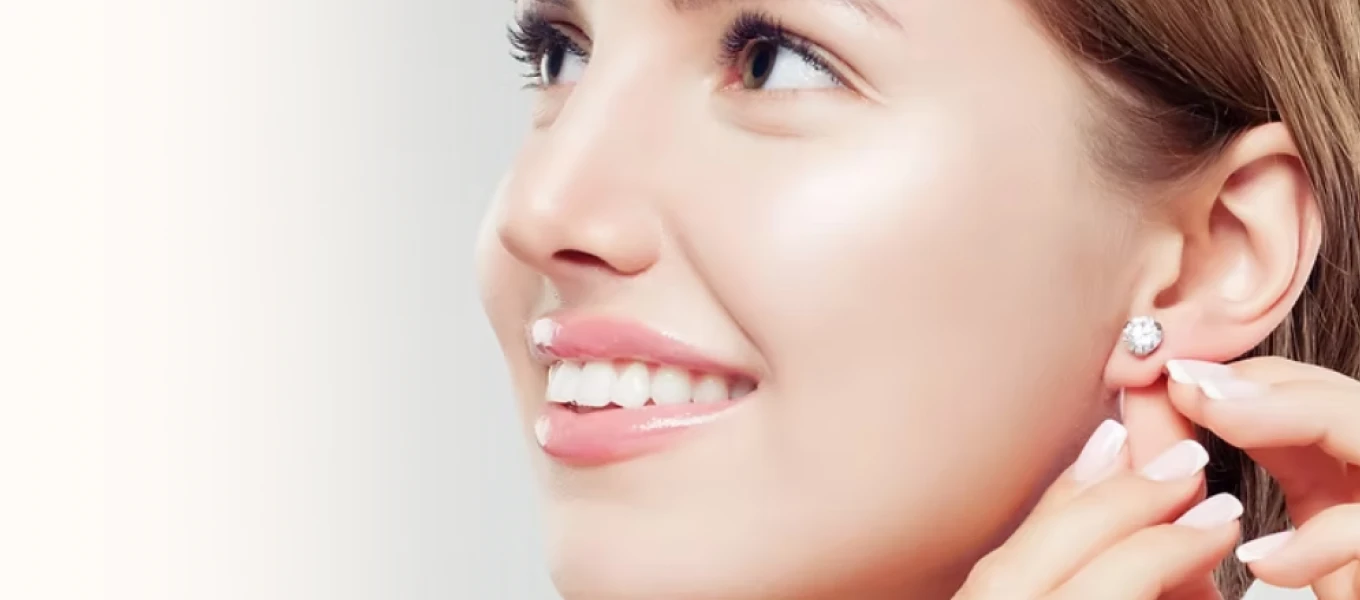Filter products

Nickel Allergy
Skin redness, itching, or even swelling are typical symptoms of a nickel allergy. Nickel is a metal found in chemical compounds and alloys. Although nickel is considered a trace element, elevated amounts can trigger allergies. Nickel is most commonly found in jewellery, belt buckles, buttons, and numerous other everyday items. Because skin contact with nickel provokes an allergic reaction, it is known as a contact allergy.
Symptoms of an Allergy
As soon as a rash, swelling, itching, or redness appears, it's possible the affected person is suffering from a nickel allergy. Nickel allergy often leads to an allergic eczema. If these symptoms occur, a doctor should be consulted. Nickel allergies can particularly develop when wearing earrings. Many metals contain nickel, which can lead to an allergic reaction.
Flutees prevent contact between the earring stud and the earlobe piercing. For protection against inflammation from contaminants and allergic reactions when wearing earrings.
Nickel Allergy and Earring Symptoms
Piercing an earlobe already carries risks. But it's not just the piercing itself; wearing earrings can also lead to problems. If nickel particles from the earring stud detach and come into contact with the skin, allergic reactions can occur. When this happens, it's referred to as a nickel allergy. Nickel is found not only in earrings but also in many other items such as coins, jewellery, buttons, or tools. Nickel allergy is a contact allergy because it only develops upon skin contact. Symptoms of a nickel allergy caused by earrings include skin redness, itching, or swelling of the earlobe or surrounding areas. Although the permitted nickel content in earrings and studs is regulated, this limit is increasingly being exceeded. Even surgical steel can contain too high a proportion of nickel. Once a nickel allergy has developed, people who suffer from it must make every effort to avoid contact with nickel.
Conventional Treatment for Nickel Allergy
A nickel allergy cannot actually be cured. According to conventional medicine, only the symptoms can be treated. When a nickel allergy occurs, it usually leads to a skin rash. This can be treated with cortisone creams. However, cortisone isn't truly healthy for the body either, as the body struggles to break it down sustainably. The simplest method is to remove the nickel-containing materials. For instance, once nickel-containing earrings are removed, the rash usually heals on its own. To prevent it from getting to that point, it's advisable to use Flutees protective sleeves made of medical-grade plastic over nickel-containing earring studs. Thanks to Flutees protective sleeves made of medical-grade plastic, there is no skin contact between the nickel-containing earring and the skin.
Protective Sleeves Made of Medical-Grade Plastic for Nickel Allergy
Flutees protective sleeves made of medical-grade plastic are indispensable for those suffering from a nickel allergy who love wearing earrings. People whose skin reacts allergically to nickel no longer have to worry when buying earrings. Our protective sleeves made of medical-grade plastic offer the simplest and best solution for a nickel allergy. The existing earring stud is simply slipped into our medical-grade plastic protective sleeve, and then it can be inserted into the earlobe as normal. Thanks to the medical-grade plastic, the protective sleeves prevent skin contact. Nickel, which is found in many metals, or even impurities from jewellery, can still be worn with the help of these protective sleeves made of medical-grade plastic. We recommend that not only people with a nickel allergy but also those with sensitive skin always put our medical-grade plastic protective sleeves on their earring studs before wearing earrings. This should help prevent allergic reactions when wearing earrings in the future.
Ear Piercings for Babies
Given the increasing use of nickel in earrings and studs, which can lead to allergies, caution should be exercised when wearing earrings. In many countries, babies have their ears pierced at a very young age. In Asian or Arab countries, it's perfectly normal to pierce babies' ears. For parents and relatives, it's simply about jewellery that looks nice, but for others, it's considered bodily harm. Particularly in childhood, a nickel allergy can have consequences, potentially leading to other severe skin conditions. It's now generally recommended that children's ears only be pierced after puberty. However, it still remains at the discretion of the parents when or if an ear piercing is done.


